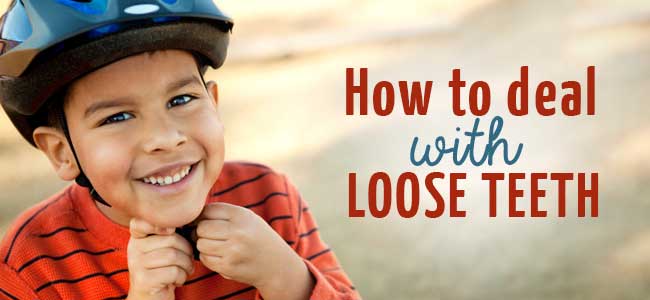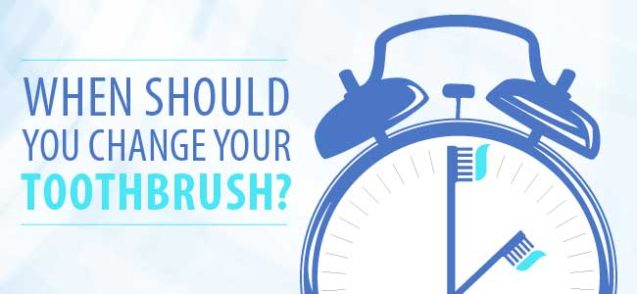
Four Rare and Interesting Dental Anomalies
Everyone knows the saying, “Curiosity killed the cat.” Do cats have a saying for us? If they could talk, it would be along the line of, “Curiosity drives humans crazy until they find out what they’re looking for.”
In the dental world, there are many fascinating cases and conditions to find out about. Here are four dental oddities that will more than satisfy your curiosity for the time being.
1. Tooth Fusion
Teeth fusion happens when two separate teeth combine to become one bigger tooth. The teeth start out as two tooth buds, but join into one tooth above the gum. Other than the slightly bigger look of the tooth, you can also notice tooth fusion when the person has one less tooth than they should.
2. Concrescence
Concrescence, similar to fusion, takes place when two teeth join; however, in this case, the cementum, which covers the roots of your teeth, fuses below the gum. Appearance-wise, the teeth look normal, but underneath the gums the roots are joined together. Anomalies like concrescence demonstrate why x-rays are very important. If one tooth needs to be extracted, but it is affected by concrescence, your dentist will need to perform surgery to separate the two teeth.
While there are no health-critical issues involved with concrescence and fusion, your dentist should be aware of them and monitor them for cavities and other dental issues.
3. Hereditary Gingival Fibromatosis
This condition’s name may be long, but thankfully it is a rare dental issue, affecting only one in 175,000 people. Hereditary Gingival Fibromatosis (HGF) occurs when your gums overgrow your teeth. There are varying degrees of HGF, but common symptoms include abnormal tooth movement as well as difficulties chewing and speaking. While HGF is not a life-threatening condition, it does need to be treated to improve quality of life.
4. Shark Teeth
Shark teeth are actually more common than you’d think. They happen when children’s permanent teeth grow in before their primary (baby) teeth have fallen out, resulting in two layers of teeth, like a shark. Typically, shark teeth go away on their own. You just have to be patient and wait for the child’s body to do the work.
However, if the permanent teeth have fully grown in, and the baby teeth have yet to fall out, the tooth roots may not dissolve on their own. If the teeth get to this point, contact your Lancaster, CA dentist to extract the baby teeth.
If you or someone you know is affected by any of these dental rarities, there’s usually no need to worry. These conditions (except for HGF) most commonly happen to primary teeth, and the best thing you can do to address them is to go to your dentist for regular check-ups.
Resources:
http://www.ncbi.nlm.nih.gov/pmc/articles/PMC3354801/
https://dentistry.umkc.edu/Practicing_Communities/asset/AbnormalitiesofTeeth.pdf
http://oasisdiscussions.ca/2015/07/30/fctg/
More

National Down Syndrome Awareness Month: Dental Tips for the Developmentally Disabled
If you’ve ever taken care of someone else, you understand how difficult it can be to get them to brush their teeth and floss every day. When you’re caring for a child—or adult—with a disability, the challenges can be even greater, as they may be predisposed to certain oral health conditions. On top of that, going to the dentist can be stressful to anyone, let alone someone who’s not able to prepare for what to expect.
October is National Down Syndrome Awareness Month, and we would like to share a few tips you as a caregiver can do to make sure your loved one maintains a healthy smile.
Dental Issues for People with Down Syndrome
There are common mouth issues that are associated with Down syndrome. Being aware of these issues will allow you to prepare and understand what steps to take next.
Children with Down syndrome often wait twice as long for baby teeth to arrive–usually around 12 to 14 months. Along with delayed eruption, they may have missing teeth, or their teeth may emerge in a different order than usual.
People with Down syndrome have a smaller upper jaw, which will crowd the upper teeth, causing an unaligned bite. Orthodontics can solve this issue, but they can be problematic for younger children. You may want to wait until they are older.
Down syndrome also compromises the immune system, leading to a higher chance of periodontal disease (gum disease). However, the treatment for gum disease remains the same:
- Brush their teeth at least twice a day.
- Floss every day.
- Visit the dentist regularly.
X-rays and examinations are particularly important to monitor common mouth issues associated with Down syndrome.
How to Prepare for Going to the Dentist
Going to the dentist can be frightening for children or adults with Down syndrome or autism. Here are some steps you can take to make the visit to the dentist go as smoothly as possible.
Inform them of what to expect. Showing them what will happen while at the dentist’s office will eliminate their fear of the unknown.
Fraser has created a great app for children and adults with mental disabilities. It uses social stories and videos to educate kids on various dental topics, including the sounds they will hear and instructions they’ll receive at the dental office, as well as steps they can take to maintain their oral health at home:
My Healthy Smile
Before you bring your loved one in for care, schedule an appointment to meet with the dentist to explain how to best accommodate your loved one during a dental visit. As a side benefit, you will both have some time to establish a relationship with the dentist so everyone can be more comfortable with the process.
Taking care of a disabled person’s dental needs can be challenging. Here at the office of Douglas B. Weber, DDS, we want to make your visit an enjoyable and rewarding experience for everyone.
Contact us today to set up an appointment.
Resources:
http://www.ndss.org/Resources/Health-Care/Associated-Conditions/Dental-Issues-Down-Syndrome/
https://www.autismspeaks.org/sites/default/files/documents/dentalguide.pdf
More

My Kid’s Tooth Is Loose — What’s Next?
Being a parent is one of the most stressful tasks in a person’s life. Once you master one stage of your child’s life, they move on to the next stage with a whole new set of problems to figure out. Case in point: their mouth. You spend years ensuring their teeth come in healthy and clean, only for them to start to fall out. As much as we love to hear the types of methods used to remove loose baby (also called primary) teeth, there are issues that can arise from this type of removal.
How Do I Know When a Tooth Is Ready to Be Pulled?
A loose tooth can cause your child pain and discomfort. You may have the urge to pull it out, but there are a few reasons why that might not be the best idea.
- Be cautious of which teeth are loose first. The first teeth that come in are usually the first teeth to come out (the front teeth should normally become loose before the back teeth). A loose tooth could be caused by damage to that tooth — for instance, from a nasty fall. If you have concern that a tooth is loose due to something other than natural causes, contact your dentist for an examination.
- Primary teeth help guide in adult teeth. If a tooth is pulled prematurely, this can affect the placement of one’s adult tooth.
- Be aware of your child’s discomfort. If the tooth isn’t ready to come out yet, it will most likely still be connected to nerves, causing pain. Another indicator the tooth isn’t ready to come out yet is if there is a lot of blood when it’s pulled.
You Won’t Let Me Tie Their Loose Tooth to a Drone – What Should I Do Instead?
To keep things natural, a good rule of thumb is to do what cavemen did. They didn’t have doors and automobiles to attach their loose teeth to, did they? If your child indicates they have a loose tooth, be sure to monitor it. Some kids may become anxious thinking about their teeth falling out. If this is the case, be reassuring and encouraging throughout the process. Beyond that, they will do all of the work. Once they find out they have a loose tooth, they will wiggle it with their tongue or fingers, leading to it falling out in a less intrusive way. If the tooth seems fairly loose and you want to help out, use a piece of gauze and gently pull the tooth while doing a wiggling motion. You shouldn’t have to use much force at all, so if doesn’t come out with a gentle pull, it probably isn’t ready yet.
There are general guidelines of when teeth are expected to become loose and fall out, but every child will be different. If you are concerned with how long your child’s baby teeth have remained in their mouth, a dentist can determine if any of them need to be pulled, while considering the health of their future adult teeth.
Tips for Giving Your Child Healthy Adult Teeth
There may be a train of thought that since baby teeth fall out, there isn’t as much of a need to care for them as compared to adult teeth. This could not be further from the truth. Taking care of children’s teeth (and gums) sets them up for a lifetime of healthy teeth. While baby teeth do eventually fall out, they will have them for around 10 to 12 years. Not only will this set them up successfully for the future, but kids need a healthy mouth to enjoy the first part of their life as well.
- Brush their teeth after every meal. The ADA has great advice on how to brush kids’ teeth.
- When a tooth starts to become loose, be sure to floss underneath it as well. Food can get caught in any crevice and will become a buffet for cavity-causing bacteria.
- Watch for certain behaviors from your child like thumb sucking and tongue thrusting.
At Douglas B. Weber, DDS, we understand the importance of the role children’s teeth play in their health. Request an appointment online with your Lancaster, CA dentist for a consultation today.
More
By admin
15 Aug, 2016
Dental Health, Dental Tips, General Dentistry, General Health, Lifestyle, Oral Health
bruxism, dental health, stress, stress relief, teeth clenching, TMD, TMJ
Stressed Out: Can Stress Affect Your Teeth?
You have too much to do at work. You have to juggle a million tasks between your children, your spouse, and errands — not to mention your mother-in-law is in town for the weekend. We all have those days, and those days can add immense stress to your life. That stress affects more than just your emotional health; it physically alters you as well.
Physical Symptoms of Stress on Your Mouth
Your mouth already experiences daily wear and tear that you need to prevent as much as possible. If you are too stressed, this adds another layer of factors fighting against the health of your mouth. It starts before you even realize — you are stressed out thinking about everything you need to do, and then you notice you’ve been clenching your teeth for the past few minutes. Depending on how you handle stress, you may be doing this multiple times per day, which takes a toll on your mouth.
Stress-related clenching and teeth grinding (also called bruxism) can carry into the night while you sleep. If left untreated, bruxism can also destroy dental restorations (fillings, crowns, bridges, etc.) that you’ve had done, creating more pain and costing more money. Additionally, this can lead to temporomandibular joint disorders (TMJ/TMD). Symptoms can include:
- Constant headache
- Sore jaw muscles
- Sensitive teeth
- Extra tooth wear
How to Prevent Teeth Grinding and Clenching
Since one of the main causes of teeth grinding and clenching is stress, the best way to stop is to reduce your stress. Hold on — put down that glass of chardonnay or moonshine you have after work to unwind (alcohol increases the likelihood of teeth grinding while sleeping). Here are some stress-management techniques that will help reduce your overall stress.
- Exercise. Not only does this release endorphins to help combat stress, but at the end of the day, you’ll be too tired to have stress-inducing thoughts.
- Autogenic relaxation. This method involves “commanding” your body to relax. This takes a lot of practice but can be very effective once learned. Learn more about autogenic relaxation here.
- Visualization. Trying to use all five of your senses, imagine a scenario that is relaxing. For example, if you imagine yourself in a forest, listen to the sway of the branches, feel the warm light creeping between the trees, and note the scent of pine needles.
- Listen to your favorite music. Classical is always a reliable genre to relax to, but listen to the type of music that helps you unwind.
These techniques will only work if you allow them to. When using them, ensure you have an open mind and allow yourself to relax. Everyone is different, and it will take time to find what relaxes you, as well as mastering the technique itself. The benefits of stress-management strategies will not only help your teeth-grinding issue but also provide benefits for many other health issues you may be experiencing.
Other Stress Reducing Tips to Consider
- If you notice throughout the day that you are still clenching, stick the tip of your tongue between your teeth. This will force you to relax your jaw muscles.
- According to the TMJ Association, take anti-inflammatory medicine (such as ibuprofen) to help with swelling and pain until you can get your teeth grinding and TMJ/TMD under control. Check with your physician to see if you are able to take anti-inflammatory medicines.
- Place a warm washcloth on your jaw before you go to bed to help relax your muscles.
If you try these stress-relieving techniques and are still experiencing pain related to clenching and grinding, your Lancaster, CA dentist can do an examination to determine the best course of action. In most cases, your dentist can create a mouth guard/splint to prevent clenching and grinding.
Additional Dental Services May Include:
- Managing pain with a special diet
- Stretching exercises
- Anti-inflammatory medications
For more information about stress and your dental health, request an appointment at Douglas B. Weber by calling (661) 952-7865 today.
Reference:
Stress management. (n.d.). Retrieved July 12, 2016, from http://www.mayoclinic.org/healthy-lifestyle/stress-management/in-depth/relaxation-technique/art-20045368
Teeth Grinding (Bruxism): Causes and Treatments. (n.d.). Retrieved July 12, 2016, from http://www.webmd.com/oral-health/guide/teeth-grinding-bruxism
TMJ Association, Ltd. (n.d.). Retrieved July 13, 2016, from http://www.tmj.org/site/page?pageId=257
More
Keep Your Toothbrush in Fighting Shape
Everything You Need to Know About Your Toothbrush
You hear it time and time again: Brush your teeth at least twice a day. It becomes so routine that you brush your teeth while juggling a few other tasks at the same time. How much time goes by before you notice the shape your toothbrush is in? Have you ever thought to yourself, “I don’t need to clean my toothbrush, my toothbrush cleans me!” The condition of your toothbrush is often the last thing you think about in your busy life, but it plays a significant factor in your oral health.
Symptoms of an Unclean, Older Toothbrush
The most common issue with an older toothbrush is effectiveness. When the bristles are frayed, its cleaning ability is compromised — leaving your teeth more exposed to bacteria.
According to the American Dental Association (ADA), you should monitor and replace your toothbrush more often if you or a family member have:
- A systemic disease that may be transmissible by blood or saliva
- A compromised immune system or low resistance to infection due to disease, chemotherapy, radiation treatment, etc.
How to Disinfect Your Toothbrush
- Rinse and air dry. The simplest way to keep your toothbrush clean: After every use, rinse it and keep it upright in an open area.
- Soak it in hydrogen peroxide.
- Boil it in hot water. This is another simple option, but be sure the toothbrush is completely cooled before handling/using. No one wants scalded gums.
- Use an ultra-violet light toothbrush sanitizer. These sanitizers made for toothbrushes (more specifically, electric toothbrush heads) are a good option, but studies show that while they do kill bacteria, they don’t have a distinct advantage over any other method.
The ADA warns to be wary of any product that says it will do more than sanitize or reduce bacterial contamination. If you are interested in a toothbrush sanitation product, make sure it is Food and Drug Administration approved. There isn’t an obvious answer as to which method is preferred or best, so do what works for you.
Not Recommended Toothbrush Care
- Microwave: While this idea makes sense on paper, the ADA doesn’t approve. It will most likely kill bacteria on your toothbrush, but zapping it can have adverse effects on the brush itself.
- Dishwasher: While this is an effective way to clean your toothbrush, the ADA states that this method will also compromise the quality of your brush.
How Often Should I Change My Toothbrush?
For typical usage with no special circumstances, you should change your toothbrush every three to four months. If you see that your toothbrush bristles are frayed or beginning to fray, replace it. If your toothbrush seems to fray too fast, you are mostly likely brushing too hard — go easy on those teeth!
Do I Need to Change My Toothbrush After I’ve Been Sick?
Research shows that this is unnecessary. While those germs are still on your toothbrush, your body has the antibodies to fight off anything related to that particular sickness you just got over. With this in mind, don’t share said toothbrush (or any toothbrush, for that matter) with another person, because they can get sick from those germs.
To keep your teeth strong and your mouth healthy, the quality of your toothbrush absolutely matters. It is important to keep your brush as clean as possible while you are using it. The most beneficial thing you can do is keep track of how long you have been using your toothbrush and replace it routinely. For more information, contact your Lancaster, CA dentist Douglas B. Weber, DDS today.
Reference:
http://www.ada.org/en/about-the-ada/ada-positions-policies-and-statements/statement-on-toothbrush-care-cleaning-storage-and-
More





